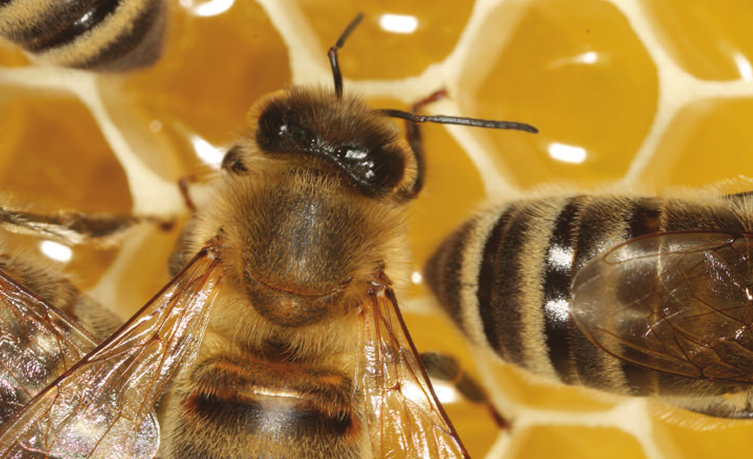5월 11일 국제학술지 ‘사이언스’의 표지논문으로 의미 있는 연구 결과가 실렸다. 지난 25년간 개구리를 비롯해 전 세계 양서류의 30%를 감염시켜 일부 종(種)은 지구상에서 자취를 감추게 만든 병균, ‘항아리곰팡이(Batrachochytrium dendrobatidis)’의 출처가 밝혀진 것이다. 그런데, 발원지는 바로 한국이었다.
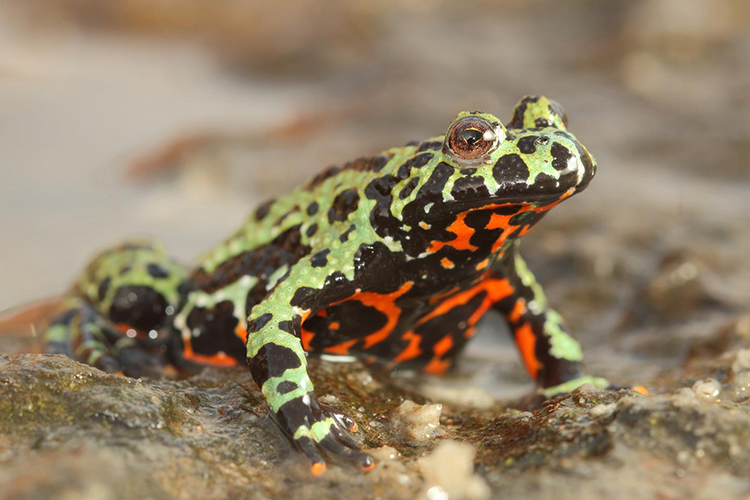
전 세계 38개 연구팀, 항아리곰팡이 계보 추적
1993년 호주에서 처음 발견된 항아리곰팡이는 양서류의 피부 조직인 케라틴을 먹이 삼아 기생하는 병균이다. 항아리곰팡이에 감염되면 양서류는 피부 호흡을 하지 못해 질식사하게 된다. 치사율이 90~100%에 이르러 25년간 호주와 중남미, 미국, 유럽 등지에서 양서류 약 200종이 멸종됐다.
양서류, 나아가 생태계 전반을 위협하는 항아리곰팡이에 대해 그간 많은 연구가 진행됐지만 이 치명적인 병균이 어디서 시작됐는지에 대해서는 밝혀진 사실이 없었다. 이번 연구 결과는 항아리곰팡이의 발원지를 밝히기 위해 영국 임페리얼칼리지런던과 서울대 등 전 세계 21개국 38개 연구팀의 협업으로 이뤄졌다.
공동연구진은 전 세계에서 항아리곰팡이 시료 234개를 모아 각각의 유전자 염기서열을 분석했다. 그런 뒤 이를 토대로 항아리곰팡이의 계보를 추적했다.
유전자의 유사성과 차이를 분석한 결과, 항아리곰팡이는 크게 네 가지 혈통으로 나뉘는 것으로 밝혀졌다. 그 가운데 세 종류는 전 세계적으로 퍼져 있었지만, 한국에서 발견된 한 종류는 오직 한국의 고유종에서만 발견됐다.
특히 한국에서 발견된 항아리곰팡이 혈통은 유전적인 다양성이 가장 높았다. 생명체는 다양한 원인에 의해 유전자에 변이가 나타나는데, 역사가 오래될수록 변이된 유전자의 양도 누적돼 유전적인 다양성이 커진다. 따라서 유전적 다양성이 높을수록 오래된 종이라고 볼 수 있다.
공동연구진은 유전자 분석을 통해 양서류에 치명적인 유전적 변이를 가진 항아리곰팡이가 언제 발생했는지도 추적했다. 기존 연구에서는 이런 항아리곰팡이가 수천 년 전에 생겨났을 것으로 추정됐지만, 이번에 공동연구진은 불과 50~120년 전에 등장해 빠르게 퍼져나갔다고 주장했다.
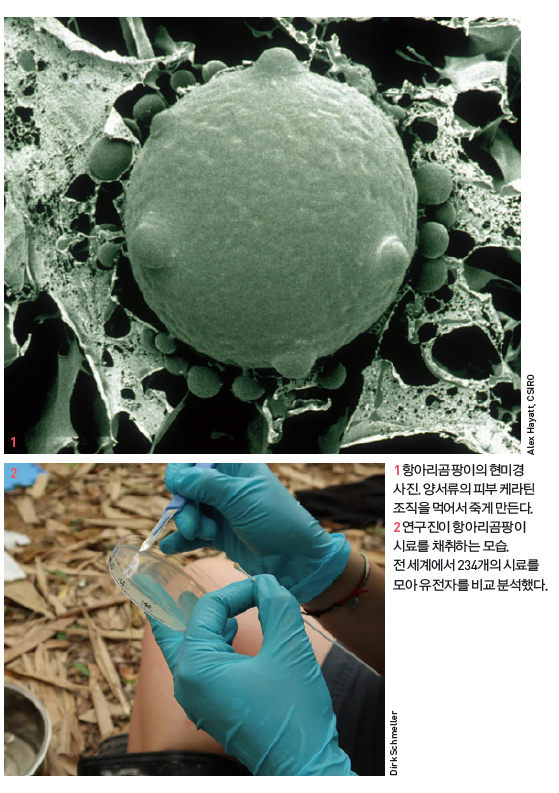
공동연구진은 “이 시기는 대륙간 국제 무역이 빠르게 증가하던 시기와 일치한다”며 “애완용 양서류의 국제 무역이 항아리곰팡이 전파에 직접적인 원인이었을 것”이라고 말했다. 다른 지역의 애완용 무당개구리에서 아시아의 항아리곰팡이 균주가 발견된 점이 그 근거였다.
결국 한국에서만 발견된 항아리곰팡이가 해외로 퍼지면서 해당 곰팡이에 대한 면역체계를 갖추지 못한 현지 양서류의 대규모 괴사를 불러왔다는 것이다.
공동연구진은 이 연구 결과가 아시아의 양서류 수출 중단이 필요한 강력한 증거라고 주장했다. 이전에 알려지지 않았던 혈통의 항아리곰팡이가 계속해서 전 세계로 퍼질 위험이 있기 때문이다. 현재 유럽의 도롱뇽에게 심각한 피해를 입히고 있는 다른 종류의 양서류 병원균 역시 아시아 양서류 수출로 전파된 것으로 추정된다.
연구를 이끈 매튜 피셔 임페리얼칼리지런던 공중보건대 교수는 “이번 연구 결과는 아시아 지역 항아리곰팡이의 (유전적) 다양성에서 빙산의 일각에 지나지 않는다”라며 “현재 진행 중인 양서류 무역을 중단하지 않으면 양서류의 생물다양성을 위험에 처하게 만들 것”이라고 말했다.
서울대, 항아리곰팡이 면역 수용체 찾아내
이번 연구에는 브루스 월드만 서울대 생명과학부 교수가 참여해 항아리곰팡이가 한국에서 시작된 것을 밝히는 데 중요한 역할을 했다. 한국에서 채집한 항아리곰팡이 시료가 가장 유전적 다양성이 높다는 사실을 확인했고, 항아리곰팡이가 국제적인 문제를 일으키기 훨씬 전인 1900년대 초에 채집된 개구리의 피부 조직에서 항아리곰팡이를 발견하는 데도 성공했다.
월드만 교수팀은 항아리곰팡이 피해를 막을 실마리도 찾았다. 외국과 달리 항아리곰팡이의 피해가 거의 없는 한국 개구리에게서 면역 수용체를 발견한 것이다. 항아리곰팡이에 감염되고도 죽지 않은 외국의 개구리도 동일한 면역 수용체를 가지고 있었다.
월드만 교수는 세계적인 양서류 전문가로, 미국 하버드대 교수를 역임하고 2009년부터 서울대 교수로 재직하고 있다. 그가 이번 연구의 배경과 의미를 뒷장에 직접 설명했다.
[영어로 읽어보세요]
The Hurdles Frogs Must Jump to Survive
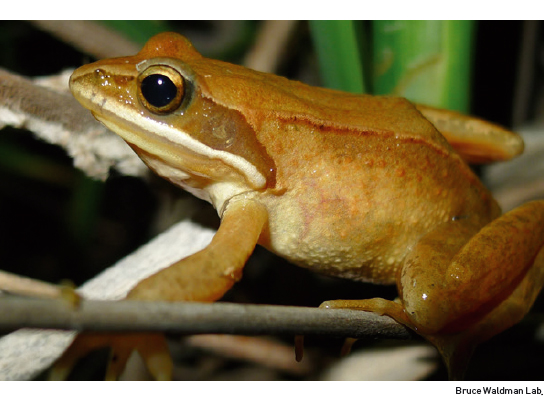
Twenty years ago, biologists on opposite sides of the world - Central America and Australia - stumbled upon dying frogs in pristine forest. Before this, the plight of amphibians had been discussed by researchers, but the factors responsible for their disappearance, such as habitat destruction, industrial and agricultural pollution, and introduced predators, seemed obvious. Now, researchers were alarmed that they were finding frogs dying in protected habitat. They could think of no explanation except the rapid spread of a new, unknown emerging infectious disease. Finally, the pathogen was identified as a chytrid fungus. Such fungi never before were known to cause disease in animals.
Witnessing of chytridiomycosis in New Zealand
A year later, while working in New Zealand, I found tree frogs, which had been introduced from Australia many years before, suffering from the same disease, termed chytridiomycosis. I was shocked to see the frogs dying in my hands, unlike anything I had witnessed in decades of studying amphibians.
I warned that the disease might cause the extinction of New Zealand’s unique native frogs. Because New Zealand separated from the supercontinent Gondwana about 85 million years ago, its fauna and flora evolved independently of those found in other parts of the world. Consequently,
many animals and plants seem quite peculiar, often resembling long extinct archaic forms. So is the case with Archey’s frog, which is morphologically similar to species that lived 180 to 200 million years ago. Archey’s frog, or its ancestors, were plentiful before the rise of the dinosaurs.
survived through the extinction of those large reptiles, and continued to do well until recent times.
Abruptly, in 1995, Archey’s frog populations dramatically crashed. In native forests where they previously had been very common, I felt lucky to find one or two. The few frogs I found were struggling or covered with skin lesions and blisters. But when I brought the frogs back to my laboratory, many of the frogs spontaneously recovered and went on to reproduce in the captive colony I had established. Using diagnostic tests, I found that none of the sick Archey’s frogs were suffering from chytridiomycosis. Instead they were dying of other bacterial and viral diseases.
When faced with new findings, scientists revise their working hypotheses. I suggested that pesticides may have made the frogs vulnerable to common pathogens. However, government officials refused to accept my conclusions. Subsequently, they cancelled my research 4permits and reassigned my projects to my competitors.
Soon I was proven correct, as other scientists confirmed that Archey’s frogs were not dying of chytridiomycosis. Indeed, when experimentally infected by the chytrid pathogen, Archey’s frog rapidly developed resistance to it.
Important findings from Korean frogs
Many frog species were feared extinct after chytrid fungus first swept through Central America and Australia. But in recent years, some species have reappeared and their populations appear to be slowly rebounding. New research shows that survivors of the epidemics secrete antimicrobial peptides that are better at killing the fungus. Survivors also have adaptive immune genes that produce molecules that better recognize and bind to the fungus, which may enable them to more rapidly clear the fungus from their skin.
Although amphibians have been found dying of chytridiomycosis in the Americas, Australia, New Zealand and Europe, such epidemics never have been reported in Asia. All Korean amphibians that we have studied have adaptive immune genes similar to those found in survivors of the disease elsewhere. How could this be?
Perhaps chytrid fungus was present in Korea all along and amphibians evolved immunological defenses against it. Consistent with this hypothesis, we found that wrinkled frogs(옴개구리) collected over 100 years ago already were infected by chytrid fungus. Korean chytrid fungus has been here so long that it has evolved into numerous distinct forms. We isolated more strains of the fungus here, with higher genetic diversity, than found anywhere else in the world. These Korean chytrid strains are lethal to frogs from other parts of the world that have yet to evolve resistance to the pathogen.
To place our findings into a global context, we joined with colleagues at 38 institutions around the world to compare the sequences of Korean chytrid strains with those found elsewhere. Using new next-generation technology, we sequenced the complete genomes of 234 strains of the fungus to understand how they evolved. The results demonstrate convincingly that worldwide strains of the pathogen all descended from the fungal strain infecting fire-bellied toads(무당개구리) in Korea. This provides evidence that chytrid fungus first evolved in Korea, then spread, and exchanged genetic material with other global strains, to emerge as an infectious disease.
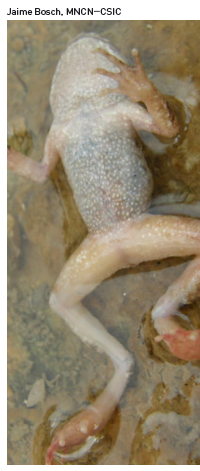
Korean frogs are traded as pets around worldwide. Some also may find passage on ships or planes, for example, in exported produce or materials. So possibly, Korean frogs spread deadly disease around the world. But this does not imply that amphibians outside Asia are doomed to extinction. Some species, like Archey’s frog, already have evolved resistance to the disease. Even among susceptible species, some individuals are able to survive infection. When the survivors reproduce, they pass their disease-resistance genes on to their offspring and the genes spread in the population. This process is termed natural selection.
Unfortunately, though, natural selection may proceed too slowly to save every species from extinction. As I saw with Archey’s frog, when we pollute or otherwise damage the natural environment, living things with which we share our planet become much more vulnerable to disease. In the 315 million years that amphibians have lived on Earth, they never have encountered such serious obstacles to survival as they do today.










